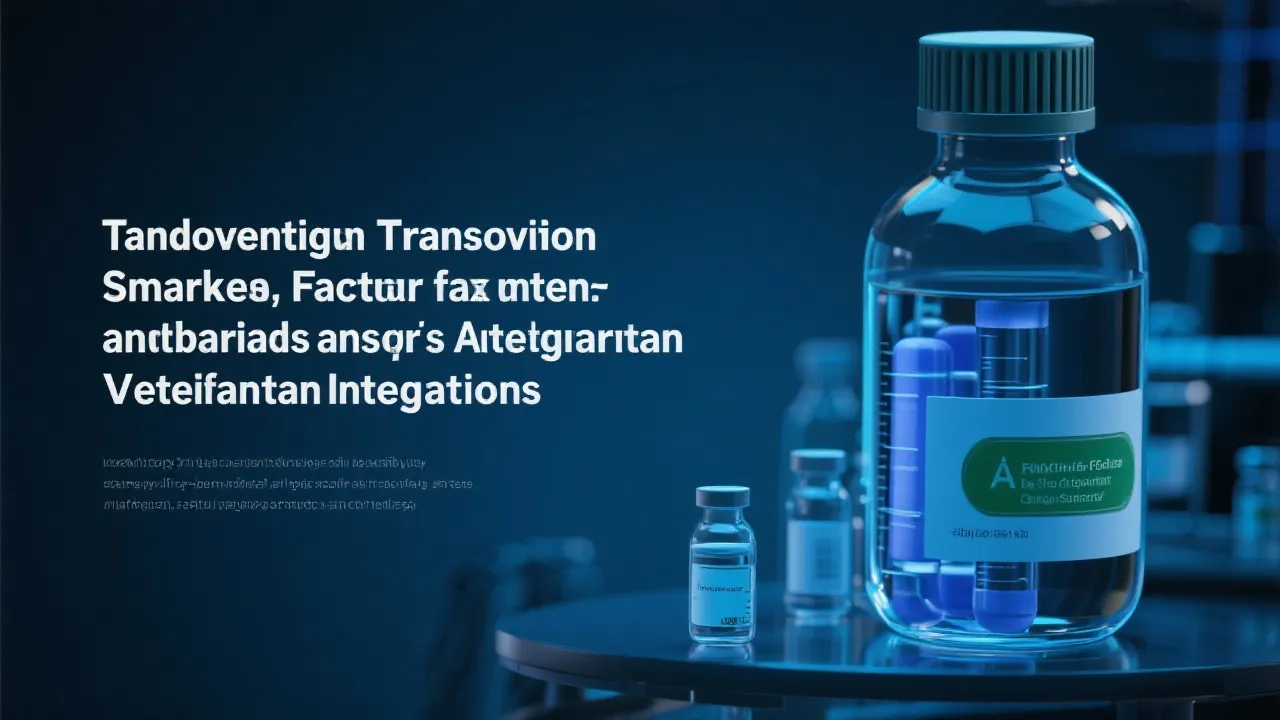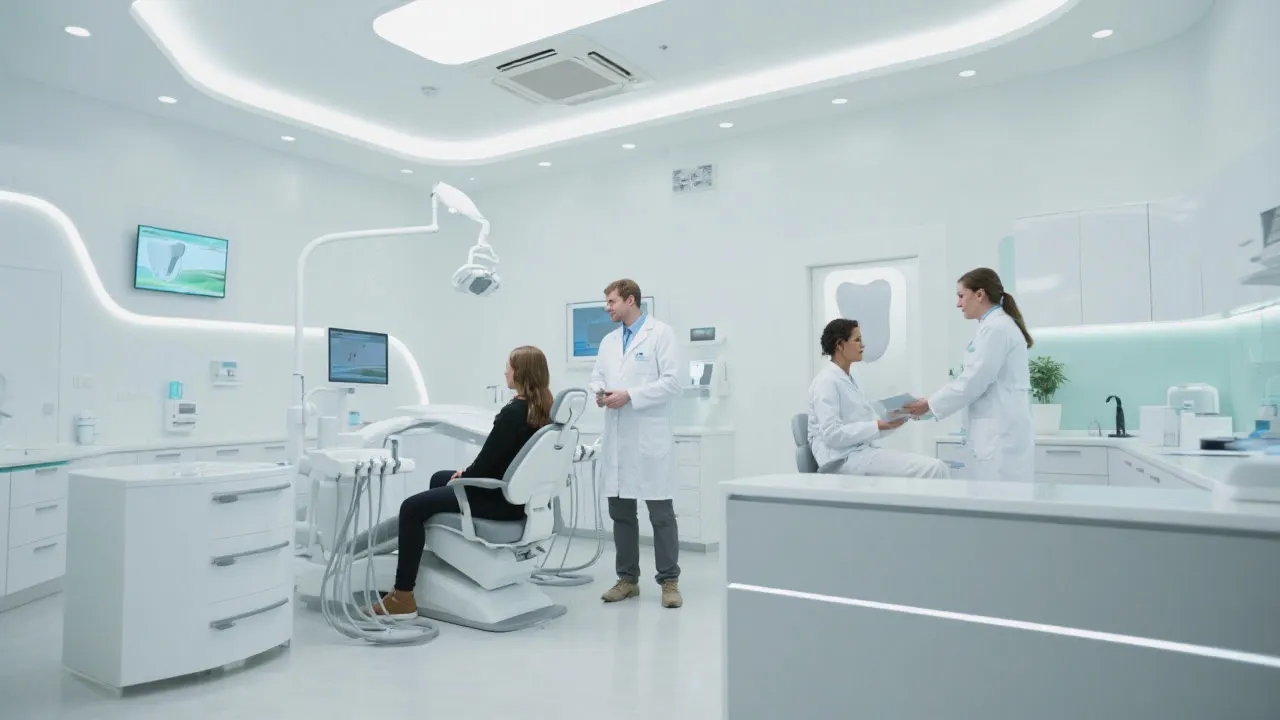Evolutionary Forces Shaping the Biopharmaceutical Industry
The pharmaceutical industry is experiencing transformative changes influenced by supply chain dynamics and technological advancements. Firms are integrating vertically and adopting automation to enhance production and competitiveness, redefining drug development and delivery's future.

The Rise of Comprehensive Process Control
Vertical integration is increasingly becoming a cornerstone in the biotech sector. Firms are now managing all phases of drug development, from research to distribution, in a bid to minimize dependency on external Contract Research Organizations (CROs). This comprehensive control not only enhances data integrity but also streamlines clinical trials, allowing firms to respond swiftly to regulatory requirements. Although the initial costs associated with vertical integration may be high, the long-term benefits are substantial. These include reduced outsourcing costs, the leverage of improved flexibility, and ultimately, a more robust operational framework.
Owning the entire process cultivates strong leadership, enabling quicker innovation cycles and better market responsiveness, which are crucial for delivering cutting-edge treatments that meet the needs of patients and healthcare providers alike. Companies benefit from having a unified vision, reduced communication barriers, and enhanced coordination across various departments. Furthermore, with integrated teams working closely, the knowledge transfer becomes seamless, resulting in faster problem-solving capabilities and a more agile approach to overcoming challenges that arise during drug development.
Vertical integration aligns not just the internal components of organizations but also fosters symbiotic relationships with regulators, clinical sites, and clinical trial investigators. As companies take charge of the entire drug development process, they cultivate an environment that encourages compliance with industry standards right from the outset. As a result, regulatory submissions can be expedited, taking products to market more quickly than companies that rely heavily on external support. This proactive stance in managing processes diminishes the threats posed by regulatory changes, ensuring continued momentum in development timelines.
Informed Decision-Making and Compliance Agility
End-to-end control offers more than mere cost efficiency; it instigates a transformation in biopharma operations. By maintaining oversight across the development pipeline, firms harness valuable data insights that enable them to optimize procedures and accelerate the progression of therapy development. For instance, data analytics tools can assess production performance in real time, identify bottlenecks, and recommend course corrections instantly. This level of granular oversight translates to better strategic decision-making and efficient resource allocation, key aspects for sustaining a competitive edge in the market.
Moreover, vertical integration ensures unwavering compliance with the constantly evolving regulatory landscape. As libraries of regulations continue to grow and change, having in-house expertise to navigate these choppy waters significantly reduces setback risks that often originate from misinterpretations or overlooked compliance requirements. This strategic change not only advocates for adherence but also promotes a culture of proactive engagement, preparing organizations to tackle impending regulatory challenges with agility.
This shift towards informed and compliant decision-making nurtures a proactive, agile, and innovative environment within the fast-paced biotech context. It supports good industry leadership, wherein stakeholders can assess risks more accurately, formulate accountability measures, and allocate resources efficiently. Therefore, organizations benefit from a dual advantage—enhanced operational efficiency and solid regulatory compliance—creating a robust framework that positions them favorably within the competitive biopharma landscape.
The Evolution of Intelligent Manufacturing
The integration of smart technologies, including Artificial Intelligence (AI) and automation, is revolutionizing biopharma manufacturing, steering a paradigm shift in the way drugs are produced. Intelligent systems are capable of refining production schedules by analyzing historical data and predicting future demand trends. Consequently, they adjust manufacturing processes accordingly, ensuring optimal use of resources. Equally, these smart systems can anticipate machinery faults or failures through predictive maintenance; thus, organizations can address issues before they cause costly downtime or disruptions in production.
This level of automation ensures that human errors are significantly reduced and production outputs are heightened, which, in turn, leads to notable cost reductions. As companies harness these intelligent manufacturing capabilities, they are not only improving the quantity of output but also enhancing the quality of products delivered to the market. The advent of advanced analytics allows firms to better understand the complexities of their manufacturing processes. For example, biopharmaceutical companies can use AI to analyze quality control data in real time, enabling rapid adjustments and ensuring that the final product consistently meets safety and efficacy standards.
Furthermore, these smart factories are inherently scalable, allowing them to adjust swiftly to demand fluctuations. In a world where patient needs can change rapidly, the ability to ensure uninterrupted supply while enhancing efficiency and responsiveness in drug production is critically important. The benefits extend beyond mere production numbers; they facilitate innovation cycles, giving companies the flexibility to respond to emerging health threats or shifts in market demand swiftly.
Decentralization and Patient-Centric Solutions
Innovative manufacturing practices are increasingly being influenced by a trend towards regionalization, which effectively mitigates vulnerabilities in global supply chains by localizing production whenever feasible. This shift towards decentralization reflects a growing awareness of the importance of ensuring consistent and timely access to medications, especially in light of recent disruptions caused by global events.
Smart factories enable adaptable setups that are tailored to specific regional markets. This means that production facilities can be designed to meet local demands, thereby ensuring uninterrupted patient access to essential therapies and medications. For instance, by establishing manufacturing plants closer to specific markets, firms can drastically reduce lead times for product delivery, a crucial factor in patient care. Moreover, these technologies foster supply chain transparency, as integrated systems can offer real-time insights into inventory levels and procurement timelines, which is essential for achieving better medication tracking.
Ultimately, this patient-centric approach is not just a better business practice; it aligns with broader healthcare goals emphasizing personalized medicine. By leveraging decentralized manufacturing capabilities, companies can optimize their production processes to facilitate individualized treatment plans tailored to specific patient demographics. Consequently, treatment outcome metrics improve, underscoring the positive implications that patient-centric solutions can impart on the overall healthcare landscape.
Biosimilars and Strategic Industry Alliances
The burgeoning biosimilars market is reshaping biopharma strategies, leading to a surge in acquisitions aimed at vertical integration to maintain competitiveness. As the biosimilar sector expands, many companies are strategically aligning themselves to secure more resilient production chains while simultaneously reducing costs associated with drug production. The push for biosimilars is not merely about entering the market; it's about evolving existing capabilities to withstand the arrival of lower-priced alternatives with potential market disruptions.
Through strategic acquisitions, firms can bolster their operational capacities, ensuring that they are not only producing biosimilars but also maintaining the highest standards of quality and efficacy. Acquisitions can serve as a means to acquire valuable intellectual property as well as experienced personnel skilled in navigating the biosimilars landscape. This strategic pivot represents a deeper understanding of market dynamics, expanding capabilities while reinforcing business models to adapt to rapid industry changes and market demands. The success of a biosimilar strategy hinges on the ability to leverage existing assets while optimizing operations, thus enhancing both operational efficiencies and profit margins.
Enhancing Market Position through Integration
Acquiring manufacturing capabilities through mergers and acquisitions extends beyond simple cost reduction; it also serves to bolster competitive positioning in the biopharmaceutical landscape. By controlling the full value chain—from research and development to production and distribution—companies gain significant advantages in market adaptability and product innovation. Such breadth of control is a vital asset in an industry where being first to market can dictate success or failure.
This integration, thus, not only empowers companies to manage costs effectively but also provides them with the leverage needed to negotiate favorable relationships with stakeholders and partners. Integrated firms are better positioned to meet pricing pressures in an increasingly price-sensitive market. This flexibility can lead to innovative pricing strategies that facilitate broader access to life-saving medications while still ensuring a sustainable business model. Furthermore, this strategic advantage enhances market positions and creates a ripple effect in value creation across the healthcare continuum, benefiting patients, healthcare systems, and stakeholders alike.
Future Outlook and Strategic Insights
Looking ahead, the biopharma industry stands on the precipice of transformative changes driven by comprehensive process control, technological advancements, and strategic alignment in operations. The focus on vertical integration is poised to sharpen, with organizations evolving to leverage their in-house capabilities for maximum efficiency and agility. As regulatory bodies continue to adapt and evolve, firms that embrace a proactive approach to compliance and operational excellence will likely outperform their competitors.
Moreover, the rise of intelligent manufacturing technologies is expected to flourish further, with developments in AI, machine learning, and predictive analytics leading the charge. These innovative tools will allow organizations to navigate the complexities inherent in drug production while simultaneously enhancing quality assurance and compliance standards. This interplay between technology and operational strategy is likely to yield profound insights that further enhance patient outcomes and operational efficiencies. In essence, organizations that prioritize integration while embracing technological advancements will create a fertile ground for future growth.
As the industry moves towards a more decentralized approach, companies that can effectively localize production while benefiting from intelligent systems will undoubtedly carve out a significant competitive advantage. With patient-centric healthcare approaches becoming the norm, the ability to provide personalized and timely access to treatments will be paramount. This will not only necessitate robust internal capabilities but also close collaborations and alliances across the biopharma ecosystem, ultimately leading to sustainable advances in health outcomes.
The landscape of biopharma highlights an interconnected web of challenges and opportunities. Organizations that combine their strengths in vertical integration, intelligent manufacturing, and collaborative strategies will be best equipped to navigate this rapidly changing environment. By evolving with purpose and a clear understanding of industry dynamics, biopharma firms can ensure they remain at the forefront of innovation and patient care, leading to a healthier future for all.
References:
- Opportunities and Challenges in Generic Drug Development
- Market Forecast for Semi-Solid Dosage Manufacturing
- Industry Insights on Drug Development Innovations
- Understanding the Impact of Vertical Integration on Competitive Edge in Pharmaceuticals
- Technological Innovations in Biopharma Manufacturing: A Comprehensive Review
- Patient-Centric Approaches: The Future of Medicine
- Strategic Acquisitions and Mergers in Biotech: Trends and Predictions for the Next Decade
- Transforming Biopharmaceuticals: Navigating the Transition to Decentralized Manufacturing
- The Role of Data Analytics in Enhancing Biopharma Operations
- The Regulatory Landscape for Biopharmaceuticals: Trends and Updates



